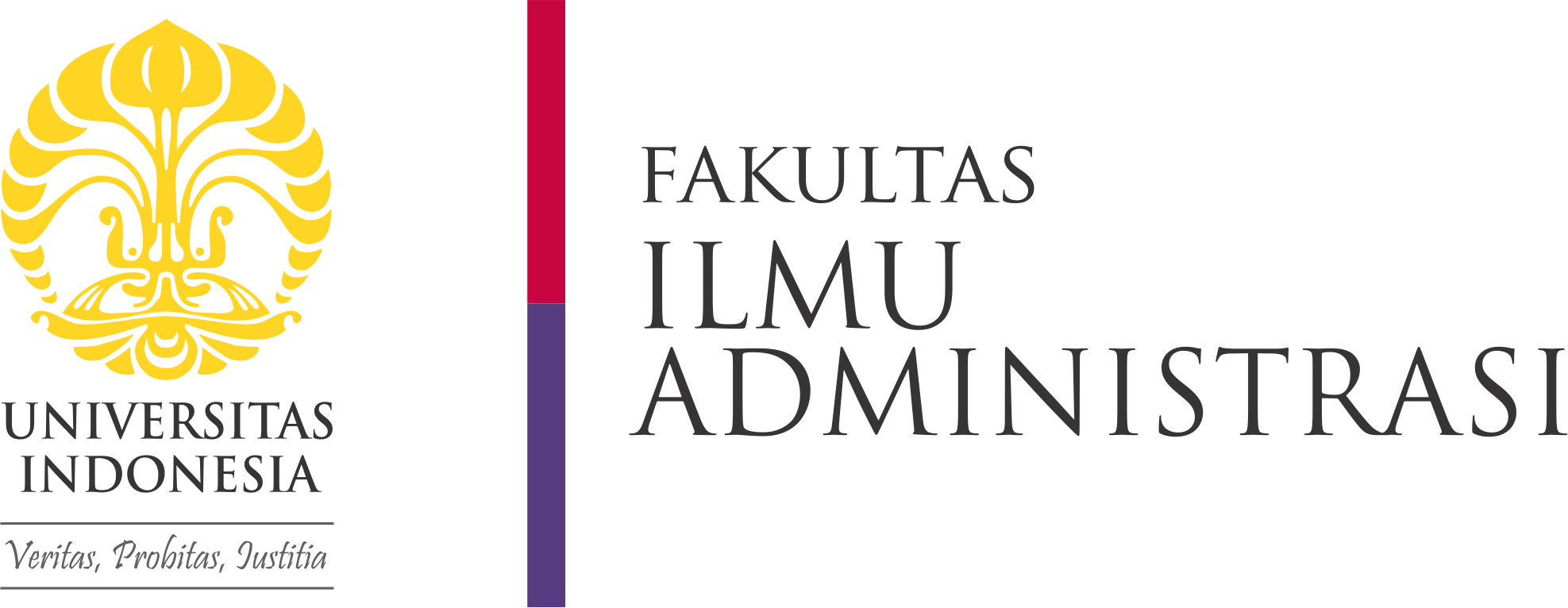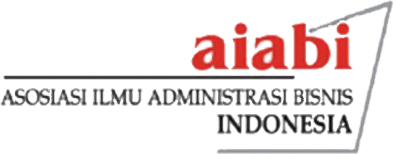Creative Commons License

This work is licensed under a Creative Commons Attribution-Share Alike 4.0 International License.
Abstract
Numerous studies show that the tax rate difference between parent and subsidiaries as well as among subsidiaries acts as the incentive for income shifting between multinational corporations (MNCs). Digital business models that emerged as an impact of digital transformation may exacerbate income shifting by MNCs. However, empirical studies to support the relation between digital business models and income shifting is still scarce. Thus, this study examined whether Indonesia’s foreign-owned manufacturing companies shift income in respect to its foreign-parent tax rate and if the level of digitalization exacerbates the practice. This study used the income-shifting approach by Hines and Rice (1994) modified by Purba (2018) extended with the level of digitalization which is intangible asset intensity. Using a panel data regression model of public-listed manufacturing companies from 2011 to 2019, this study found no evidence of income shifting between foreign-owned Indonesian companies with its parent overseas. Moreover, using moderated regression analysis, this research found that the level of digitalization did not strengthen the influence of tax rate to income shifting. Thus, it concluded that digitalization did not influence income shifting practice. While the results were inconsistent, it did not rule out the possibility of income shifting between affiliates in a group and/or the utilization of other channels of income shifting such as debt and transfer pricing. Furthermore, this study may initiate future studies in the relationship between income shifting and digitalization by employing different measurement or expanding the research’s samples.
References
Almamalik, L. (2020). The Development of the Maturity Model to Assess the Smart Indonesia Manufacturing Companies 4.0 Readiness. Atlantis Press. https://doi.org/10.2991/aebmr.k.200305.026 Bughin,
J., & Manyika, J. (2013). Measuring the full impact of digital capital. McKinsey Quarterly, (4), 88–97. Beer,
S., & Loeprick, J. (2015). Profit shifting: drivers of transfer (mis)pricing and the potential of countermeasures. International Tax and Public Finance, 22(3), 426–451. https://doi.org/10.1007/s10797-014-9323-2
Baldassarre, F., Ricciardi, F., & Campo, R. (2017). The advent of Industry 4.0 in the manufacturing industry: Literature review and growth opportunities. DIEM: DubrovnikInternational Economic Meeting, 3(1), pp. 632-643).
Sveučilište u Dubrovniku. Bauer, T., Kourouxous, T., & Krenn, P. (2018). Taxation and agency conflicts between firm owners and managers: a review. Business Research, 11, 33-76. Springer. https://doi.org/10.1007/s40685-017-0054-y
Bal, H. Ç., & Erkan, Ç. (2019). Industry 4.0 and Competitiveness. Procedia Computer Science ,158, 625–631. Elsevier B.V. https://doi.org/10.1016/j.procs.2019.09.096
Barbu, A., & Militaru, G. (2019). The moderating effect of intellectual property rights on the relationship between innovation and company performance in the manufacturing sector. Procedia Manufacturing, 32, 1077-1084.
Crotti, R. (2021). Profit-Shifting Opportunities of Multinationals? Does Intangible Asset Intensity Increase Profit-Shifting Opportunities of Multinationals?. Graduate Institute of International and Development Studies Working Paper.No. HEIDWP02-2021. Graduate Institute of International and Development Studies, Geneva.
Devereux, M. P., Griffith, R., Klemm, A., Besley, T., Bond, S., Keen, M., Ottaviani, M., Seabright, P., Sinn, H.-W., & Thum, M. (2002). Can International Tax Competition Explain Corporate Income Tax Reforms?. Economic Policy, 17(35), 449-495.
Dischinger, M., & Riedel, N. (2011). Corporate taxes and the location of intangible assets within multinational firms. Journal of Public Economics, 95(7–8), 691–707. https://doi.org/10.1016/j.jpubeco.2010.12.002
Disatnik, D., & Sivan, L. (2016). The multicollinearity illusion in moderated regression analysis. Marketing Letters, 27, 403-408.
Dudar, Olena., Voget, Johannes. (2016). Corporate taxation and location of intangible assets: Patents vs. trademarks. ZEW Discussion Papers, 16(015). http://nbn-resolving.de/urn:nbn:de:bsz:180-madoc-407057
Fair Tax Mark. (2019). The Silicon Six. December. www.fairtaxmark.net Grubert, H. (2003). Intangible Income, Intercompany Transactions, Income Shifting , and the Choice of Location. National Tax Journal, 56(1). https://about.jstor.org/terms
Griffith, R., Miller, H., & O’Connell, M. (2014). Ownership of intellectual property and corporate taxation. Journal of Public Economics, 112, 12–23. https://doi.org/10.1016/j.jpubeco.2014.01.009
Gallemore, J., & Labro, E. (2015). The importance of the internal information environment for tax avoidance. Journal of Accounting and Economics, 60(1), 149–167. https://doi.org/10.1016/j.jacceco.2014.09.005
Greil, S. (2019). The Arm’s Length Principle in the 21st Century – Alive and Kicking?. SSRN Electronic Journal. https://doi.org/10.2139/ssrn.3379092
Guzmán, V. E., Muschard, B., Gerolamo, M., Kohl, H., & Rozenfeld, H. (2020). Characteristics and Skills of Leadership in the Context of Industry 4.0. Procedia Manufacturing, 43, 543–550. https://doi.org/10.1016/j.promfg.2020.02.167
Hines, J. R., & Rice, E. M. (1994). Fiscal paradise: Foreign tax havens and american business. Quarterly Journal of Economics, 109(1), 149–182. https://doi.org/10.2307/2118431
Huizinga, H., & Laeven, L. (2008). International profit shifting within multinationals: A multi-country perspective. Journal of Public Economics, 92(5–6), 1164–1182. https://doi.org/10.1016/j.jpubeco.2007.11.002 Hanlon,
M., & Heitzman, S. (2010, December). A review of tax research. Journal of Accounting and Economics, 50(2-3). https://doi.org/10.1016/j.jacceco.2010.09.002
Klassen, K. J., & Laplante, S. K. (2013). A Model of the Cost of Income Shifting with an Application to Tax Planning and E-Commerce. SSRN Electronic Journal. https://doi.org/10.2139/ssrn.2226544
Kang, H. S., Lee, J. Y., Choi, S., Kim, H., Park, J. H., Son, J. Y., ... & Do Noh, S. (2016). Smart manufacturing: Past research, present findings, and future directions. International journal of precision engineering and manufacturing-green technology, 3(1), 111-128.
Kieso, Weygandt, & Warfield. (2018). Akuntansi Keuangan Menengah (Intermediate Accounting). Jakarta: Salemba Empat.
Klein, D., Ludwig, C., & Nicolay, K. (2020). Internal Digitalization and Tax-efficient Decision Making. SSRN Electronic Journal. https://doi.org/10.2139/ssrn.3716119
Lie, L. (2009). Penggunaan MRA dengan Spss untuk Menguji Pengaruh Variabel Moderating terhadap Hubungan antara Variabel Independen dan Variabel Dependen. Jurnal Teknologi Informasi DINAMIK, 14(2), 90–97. Retrieved from https://www.unisbank.ac.id/ojs/index.php/fti1/article/view/95/90
Lambok, R. S., & Jasman, J. (2018). Profit Shifting Determinants and Tax Haven Utilization: Evidence From Indonesia. Russian Journal of Agricultural and Socio-Economic Sciences, 83(11), 195–207. https://doi.org/10.18551/rjoas.2018-11.23
McClelland, G. H., Irwin, J. R., Disatnik, D., & Sivan, L. (2017). Multicollinearity is a red herring in the search for moderator variables: A guide to interpreting moderated multiple regression models and a critique of Iacobucci, Schneider, Popovich, and Bakamitsos (2016). Behavior Research Methods, 49(1), 394–402. https://doi.org/10.3758/s13428-016-0785-2
Mizintseva, M. F., & Gerbina, T. V. (2018). Knowledge management: a tool for implementing the digital economy. Scientific and Technical Information Processing, 45(1), 40-48.
McGuire, S. T., Rane, S. G., & Weaver, C. D. (2018). Internal information quality and tax-motivated income shifting. Journal of the American Taxation Association, 40(2), 25–44. https://doi.org/10.2308/ATAX-51959
Mihardjo, L. W. W., Sasmoko, S., Alamsjah, F., & Elidjen, E. (2019). Digital leadership role in developing business model innovation and customer experience orientation in industry 4.0. Management Science Letters, 9(11), 1749–1762. https://doi.org/10.5267/j.msl.2019.6.015
Nurhidayati, N., & Fuadillah, H. (2018). The Influence of Income Shifting Incentives towards The Tax Haven Country Utilization: Case Study on the Companies listed in Indonesian Stock Exchange. Jurnal Akuntansi Dan Keuangan, 20(1), 27. https://doi.org/10.9744/jak.20.1.27-38
Olbert, M., & Spengel, C. (2017). International Taxation in the Digital Economy: Challenge Accepted?. World Tax Journal: WTJ, 9(1), 3–46.
Oberer, B., & Erkollar, A. (2018). Leadership 4.0: Digital Leaders in the Age of Industry 4.0. International Journal of Organizational Leadership, 7(4), 404–412. https://doi.org/10.33844/ijol.2018.60332
Olbert, M., & Spengel, C. (2019). Taxation in the Digital Economy – Recent Policy Developments and the Question of Value Creation. SSRN Electronic Journal. https://doi.org/10.2139/ssrn.3368092
Petruzzi, R., & Buriak, S. (2018). Addressing the Tax Challenges of the Digitalization of the Economy–A Possible Answer in the Proper Application of the Transfer Pricing Rules?. SSRN Electronic Journal, 72, Intl Tax Issue 4a.
Purba, A. (2018). Base Erosion And Profit Shifting In Indonesia. ANU open access thesis. https://doi.org/ 10.25911/5D611F3731B9A
Richardson, G., & Taylor, G. (2015). Income Shifting Incentives and Tax Haven Utilization: Evidence from Multinational U.S. Firms. International Journal of Accounting, 50(4), 458–485. https://doi.org/10.1016/j.intacc.2015.10.001
Stiglitz, J. E. (1985). The General Theory Of Tax Avoidance. National Tax Journal, 38(3), 325–337. https://doi.org/10.1086/ntj41792029
Yunidar, A., & Firmansyah, A. (2020). Financial Derivatives, Financial Leverage, Intangible Assets, and Transfer Pricing Aggressiveness: Evidence from Indonesian Companies. Jurnal Dinamika Akuntansi Dan Bisnis, 7(1). https://doi.org/10.24815/jdab.v7i1.15334
authorship-statement_Digitalization and Tax Motivated Income Shifting_Devenni Putri Fau and Lestari Kurniawati.pdf
Recommended Citation
Fau, Devenni Putri and Kurniawati, Lestari
(2022)
"Digitalization and Tax-Motivated Income Shifting,"
BISNIS & BIROKRASI: Jurnal Ilmu Administrasi dan Organisasi: Vol. 29:
No.
3, Article 2.
DOI: 10.20476/jbb.v29i3.1345
Available at:
https://scholarhub.ui.ac.id/jbb/vol29/iss3/2






